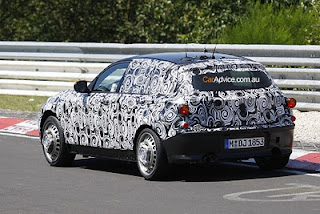BMW 1 Series, a Brief History - Ideal Engines
The BMW 1 Series was produced as an entry level sports car which started production in 2004. Since its inception the 1 Series has become the second best selling BMW vehicle and accounts for nearly one fifth of all BMW sales globally.
The 1 series was brought into the market in 2004 by BMW and shares a great deal with its larger 3 series cousin. Many chassis, powertrain, hardware, electrical and structural components were borrowed directly from the 3 series. Initially launched as a five door hatch back known as the E87 with a quick addition of a three door hatch back model which was known as the E81 body style.
The 1 series was the smallest and most affordable vehicle in the BMW range. In 2008 a coupe (E82) and a convertible (E88) was also introduced to the production line up. The convertible used a soft top instead of the folding hard top more commonly used on the 3 series. By doing this it was lighter, cheaper to produce and saved on trunk space.
The E82 coupe featured a combination of equipment that was marketed by BMW as what was called Efficient Dynamics to help reduce fuel consumption. Items that continued to carry over from the 3 series were the Macpherson struts and the trapezoidal link rear axle assembly. The 1 series shares approximately sixty percent of its parts with the 3 series.
Body styles and codes through the years:
116i
130i
116i
The 1 series was brought into the market in 2004 by BMW and shares a great deal with its larger 3 series cousin. Many chassis, powertrain, hardware, electrical and structural components were borrowed directly from the 3 series. Initially launched as a five door hatch back known as the E87 with a quick addition of a three door hatch back model which was known as the E81 body style.
The 1 series was the smallest and most affordable vehicle in the BMW range. In 2008 a coupe (E82) and a convertible (E88) was also introduced to the production line up. The convertible used a soft top instead of the folding hard top more commonly used on the 3 series. By doing this it was lighter, cheaper to produce and saved on trunk space.
The E82 coupe featured a combination of equipment that was marketed by BMW as what was called Efficient Dynamics to help reduce fuel consumption. Items that continued to carry over from the 3 series were the Macpherson struts and the trapezoidal link rear axle assembly. The 1 series shares approximately sixty percent of its parts with the 3 series.
Body styles and codes through the years:
116i
- 2007-E81
- 2004-E87
- 2007-E81
- 2004-E87
- 2008-E88
- 2007-E81
- 2009-E82
- 2004-E87
- 2007-E88
- 2008-E82
- 2008-E88
- 2008-E82
- 2008-E88
130i
- 2005-E81
- 2005-E87
- 2007-E82
- 2007-E88
- 2009-E81
- 2009-E87
- 2007-E81
- 2009-E82
- 2004-E87
- 2008-E88
- 2007-E81
- 2007-E82
- 2004-E87
- 2008-E88
- 2007-E81
- 2007-E82
- 2007-E87
- 2008-E88
116i
- 1.6L-N45B16
- 1.6L-N43B16
- 2.0L-N43B20
- 2.0L-N46B20
- 2.0L-N43B20
- 2.0L-N46B20
- 2.0L-N43B20
- 3.0L-N52B30
- 3.0L-N52B30
- 3.0L-N51B30 SULEV
- 3.0L-N52B30
- 3.0L-N54B30
- 3.0L-N55B30
- 2.0L-N47D20
- 2.0L-M47TU2D20
- 2.0L-N47D20
- 2.0L-M47TU2D20
- 2.0L-N47D20
- 2.0L-N47D20
Wayne Adams is an expert in BMW 1 Series Engine. If you are interested in learning more about quality BMW 1 Series Engines, please contact us by visiting our main site: Japanese Engines or by calling us at 442085960396
Article Source: http://EzineArticles.com/?expert=Wayne_M_Adams 







































0 comments:
Post a Comment